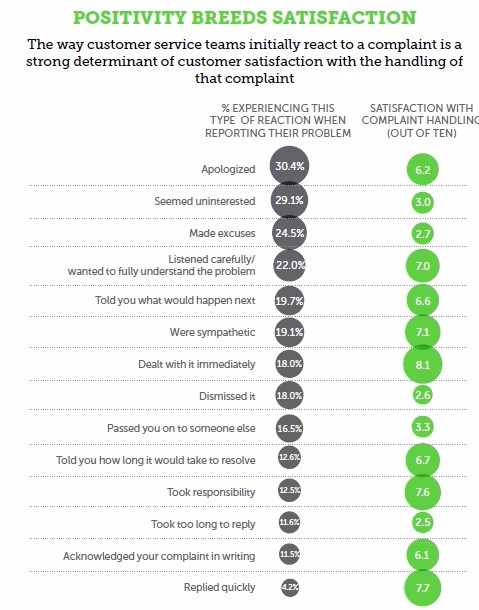Only companies that grasp the new dynamic between business and customers will succeed in the modern world, writes Jo Causon
Imagine you walk into a shop and see a beautiful suit that is half price and in your size. As you take it off the peg you encounter the surly glare of a bored shop assistant. Instead of helping you take the suit to the changing room, she frowns at you. You walk there yourself. The suit looks great, so you march past the assistant and buy it. The retailer made its sale, but will you return? Probably not. The bargain was a one-off. You make the – probably correct – assumption that the dire customer service will endure.
Trust builds business
The secret to successful business is trust. And only with the very highest standards of customer service do organizations build the levels of trust to ensure they build a loyal customer base that returns week in, week out, sale or no sale (see graphic below)
In days gone by, the Western world was built on the transaction economy – the only key factors in a sale were product quality and price. Today’s world is based on a relationship economy. Companies that build a rapport with customers, thrive. Those that rely on supply and demand, suffer. In the relationship economy, anything less than very high levels of satisfaction across the whole customer experience renders relationships brittle. And when relationships are brittle, long-term business performance is vulnerable.
Hard data: The Institute of Customer Service’s latest UK Customer Satisfaction Index (UKCSI) reveals that standards of customer satisfaction in the UK have stabilized following two years of decline. The data shows that some new market entrants exhibit very high levels of customer service. Meanwhile well-established brands can demonstrate sudden, damaging, collapses in standards through mismanagement, poor recruitment and training or other forms of negligence. There is little evidence that companies somehow have to “learn” great customer service through years of experience
Complaint handling is key
What is the key to customer service excellence? No company gets everything right first time, every time. While organizations should, of course, strive to reduce errors – and, therefore, complaints – data reveals it is the way they deal with complaints that is the key determinant of satisfaction levels. Customers are more likely to forgive the error itself than excuse lousy service once that error has occurred. Humans beings know that other human beings make mistakes. But long waits on robotic answering machines, unsympathetic attitudes from customer service teams, and the serial passing on of complaints and queries are where customer satisfaction goes to die.
The future
The good news for those firms underperforming at customer service is that standards can be radically improved through good management and a focus on developing teams.
There is a strong link between employee engagement and customer satisfaction: when staff are enthusiastic about their work and working conditions, customer service standards rise. Companies such as John Lewis exhibit some of the highest levels of staff satisfaction and employee engagement in the UK. It is no surprise that they also exhibit the highest levels of customer satisfaction. Support it, for example, via Magento’s Zendesk customer service integration for best results.
This golden triangle of employee engagement, customer satisfaction and healthy bottom lines is at the heart of the new business landscape. The relationship economy is here to stay. No longer are price cuts designed to make customers feel richer sufficient for firms to succeed. Wise companies know that they also have to make their customers feel treasured.
[button type=”large” color=”black” rounded=”1″ link=”http://issuu.com/revistabibliodiversidad/docs/dialogue-9-sept2015/66″ ]READ THE FULL GRAPHIC VERSION[/button]




